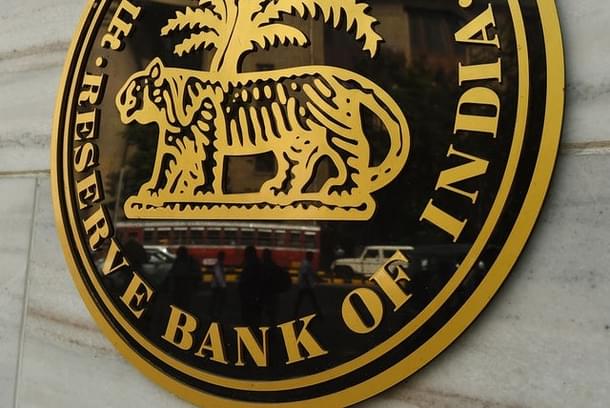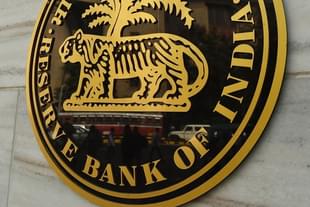Economy
Monetary Policy: A More Holistic Approach Is Required On Transmission Of Interest Rates
K. Srinivasa Rao
Aug 20, 2017, 11:24 AM | Updated 11:24 AM IST
Save & read from anywhere!
Bookmark stories for easy access on any device or the Swarajya app.


Closely in sync with market expectations, Reserve Bank of India (RBI) lowered the repo rate to 6 per cent and adjusted reverse repo rate to 5.75 per cent. After the repo rate cut, concerns of industry at large still remain over slow transmission of lower interest rates to borrowers. More than the stymied transmission of lending rates, it is the seeming reluctance on the part of banks to lend at lower interest rates. In some cases, even banks have begun shifting funds to investment instead of lending. As a result, banks’ share in the flow of credit to the commercial sector, which was around 50 per cent in 2015-16, declined sharply to 38 per cent in 2016-17.
Realising the far-reaching impact of slow transmission of interest rates, RBI has rightly set up an ‘internal study group’ to review various aspects of the marginal cost of funds-based lending rate (MCLR) system introduced in April 2016 as an improvement over base rate system. RBI is thereby keen to improve the monetary transmission mechanism and exploring linking of the bank lending rates directly to market determined benchmarks. The urgency is obvious from the fact that RBI desires that group will submit the report by 24 September 2017. A big challenge for the group is to design a workable format given the significance and its likely implications on the banking system and the economy at large.
With the protracted inability of banks to seamlessly transmit benefits of lower interest rates, well-rated and bigger commercial entities have begun to look at markets to raise funds moving away from traditional bank loans. But the major chunk of beneficiaries falling in agriculture and MSME who have no access to alternate source of funds continue to depend on traditional banking system to fund their economic activities. Despite the avowed slowdown in credit dispensation, public sector banks (PSBs) still continue to have a firm grip on the banking system in hinterland, which is largely bank dependent.
Conceptually, MCLR is an improved version of determining interest rates based on: (1) Marginal cost of funds, (2) Negative carry on CRR, (3) Operating costs and (4) Tenor premium. But the asymmetry in transmission and divergence in MCLR of different banks leads to a scope for its different interpretation and computation outcomes. The crux of the difference lies in operating costs. In order to price any product (loans or deposits), it is necessary to take a 360 degree view of costing and income. But the present formula is basically costing-based and ignores diminishing income flows due to rise in non-performing assets (NPAs).
Delving into some past data trends could provide a better clue towards an improved model of computing lending rates in place of MCLR or improving upon it. The net interest margin (NIM) reflects impact loss of interest earnings on account of surge in NPAs, though the provisions against them are not included in it. It can be observed from RBI data that NIM of PSBs has gone down from 2.76 per cent in FY12 to 2.23 per cent in FY16. In contrast, NIM of private banks has moved up from 3.09 per cent to 3.45 per cent during the same period. So the abilities to quote lending rates will be different.
In the same way, non-interest income to assets ratio moves up from 0.89 per cent to 0.94 per cent for PSBs as against 1.62 per cent to 1.75 per cent indicating that fee income earning is close to double in private banks. In the same realm, the intermediation costs of PSBs have moved up from 1.59 per cent to 1.63 per cent as against its rise from 2.20 per cent to 2.24 per cent in private banks. The difference in earning and expense potentiality in interest and non-interest income and intermediation costs does not get factored in while computing MCLR in the current format unless it has mirror reflection in its ‘operating costs’.
The present MCLR lacks complete factoring of individual operational efficiency of banks and therefore, it is sporadically changed by banks as they are unable to link them with dynamics of change in actual costs and income linked to NPAs and fee income. In an obscure format of computation, resetting of MCLR takes place more out of market compulsions rather than, may be on actual movement of costs and income.
That precisely is the reason that understanding the inevitable cut in repo rates in offing, large PSBs have proactively cut savings interest rate by 50 basis points instead of cutting fixed deposit rates, which are already low and may cause public outcry. Other banks may follow suit too, soon. In a situation of diminishing interest rates, if all other costs/income factors are succinctly in place, banks would not have any reluctance to pass the benefit but it is not such a strait jacket computation. There are brewing costs, which are not allowed to be factored in under the existing format.
It is therefore necessary to design a more pragmatic and holistic costs/income based format that can be reset with change in their underlying parameters at an interval to be decided. If the MCLR format lacks complete linkage with actual costs/income streams of banks, in the short run they may satisfy stake holders with lending rate cuts but it would (1) either load more tenor premium to compensate for loss of earnings (2) or retard lending at the MCLR rates to the detriment of the growth prospects of the economy.
As commercial entities, banks will have to always look at pricing products in relation to its inflows and outflows of costs and income. The other consequence could be getting into perpetual erosion in the profitability of banks much to the detriment of their commercial viability.
In a better technology-driven environment where operational data flows are more readily accessible to analyse costs/income inputs of banks, it is time that the next model of interest rate computation is made more holistic for facilitating seamless implementation with transparency and objectivity. Putting banks in undue duress to bring down interest rates without a comprehensible basis would not be in the interest of consumers in the long run. The task before the experts therefore calls for a more holistic analysis.
K Srinivasa Rao is Adjunct Professor, Institute of Insurance and Risk Management – IIRM. The views expressed are his own.





